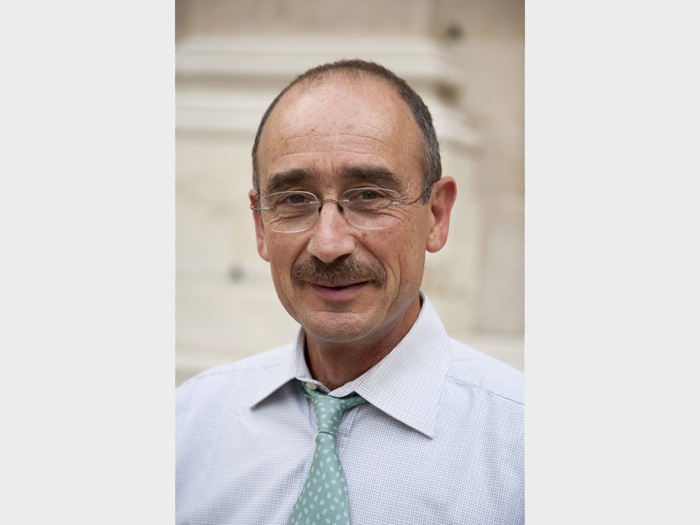Guest post by Teresa Bonello
It was 1984 and the first cloning of the homeobox sequence in Drosophila had just been reported. Newly-minted postdoc Denis Duboule was called into the office of his mentor, Pierre Chambon, and asked if he wanted to lead his own investigation looking for Hox clusters in mice. What followed was an illustrious research career into the functional characterization of mouse Hox clusters with seminal contributions to our understanding of limb development.
Duboule’s interest in Homeotic genes had been piqued much earlier, when as a student he had seen talks by Ed Lewis and David Hogness. Lewis had shown that Homeotic genes were organized into clusters in Drosophila, while Hogness had just started to clone these clusters. It was the first time people could make a link between genetics and genes, said Duboule.
“Oh, I hated it!” Duboule replies, when asked what sparked his interest in developmental biology. “One process I could never understand was gastrulation – I was looking at these frogs and just couldn’t understand it. Now I teach gastrulation and love it.” Duboule explains that things become really interesting in the field once homologous recombination became available. “Before that – in the 80’s and 90’s – I must say it was a bit boring. Genetics in mice was rudimentary at the time. With homologous recombination however you could really start to address functional questions in mice.” Duboule and his team used this tool to understand the regulation of the Hox genes. “What would happen if we switched gene A for gene B? Would its expression come too early or too late?”
When asked about what genetic technologies he is currently excited about, he laughs: “Are you expecting something surprising?” he says. “The advent of CRISPR has taken me back twenty years. When homologous recombination was introduced many different people used it in many different ways. In a similar way there are many creative ways to use CRISPR that are still being developed.” His only concern is that when the experimental possibilities become so great, facilitated by technologies like CRISPR, we sometimes become distracted from hypothesis-driven research. “These days I feel it is particularly pertinent to remind the people in my lab – what for?”
Early in his career, Denis Duboule was taken under the wing of Pierre Chambon, who allowed him to pursue research independent of the work being carried out in the lab. Duboule recognizes that this was an atypical situation. When asked if this type of mentorship contributed to his success as a scientist, he replies, “I think it was more of a general education that I received from my parents – a country-side upbringing – that allowed me to pursue the path that I did.” On the subject of mentorship Duboule agrees it is important to find a good mentor. But what is a good mentor? “A common misconception that people have is that mentors are there to give advice. No one can give you advice that is better than the one you can produce yourself. A mentor should induce you to think about the question for yourself.” Duboule suggests that young researchers fix appointments with their mentor well in advance. “Don’t arrange a meeting when things are going well or inversely when things are going badly. See your mentor for fun. He or she will then be able to identify the issues you should be thinking about but not in a directive way. The role of a mentor is to stimulate thinking.”
Duboule is involved in a number of outlets for communicating basic sciences to the public and has made appearances on television and radio. He’s also written for newspapers. “Science in Europe is almost one hundred percent publicly funded. So I have always considered it part of my job to communicate science to the taxpayer”, says Duboule. “This is more than just a task. It’s something that feels nice. What do you do when you read a good book, or see a nice painting? You tell your friends. It’s fun to communicate, fun to share something that you yourself find of interest. It’s a very human behavior. You don’t cook for yourself. If it’s good, you invite your friends to share in it.”
The translational sciences are often associated with buzz-words, primed to create an emotional response in the public. How can we achieve the same level of public interest in the basic sciences? Duboule’s response is simple. “There is nothing so complex, that you cannot explain it to your mother.” The benefits of better communicating science to the public are reciprocal. “If you can have people who are seventy years of age understanding CRISPR and what it can bring to medicine, it adds a lot to your own understanding of things.”

Teresa Bonello
About the author:
Teresa Bonello is a postdoctoral scientist at the University of North Carolina in the field of Drosophila genetics. She is currently studying the relationship between cell-cell contacts and apical-basal polarity in the early embryo. Teresa completed her graduate studies at the University of New South Wales, Australia, in the area of small-molecule therapeutics for the treatment of cancer.













